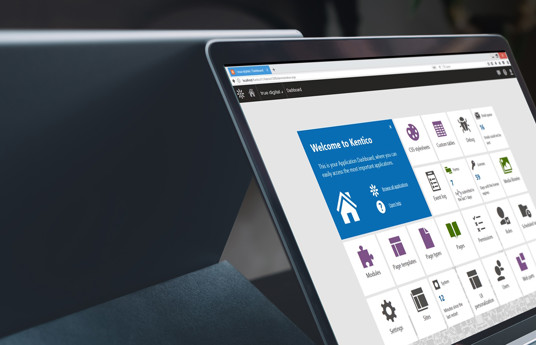Optimising user experience: This time it’s personal
Many of us take the personalised content provided by the likes of Amazon, Facebook and online supermarkets for granted. They’re constantly using data - in key moments - to create more meaningful, relevant experiences.
But we find that lots of marketers think it takes an Amazon sized marketing budget to take advantage of digital personalisation. This simply isn’t true.
Take one, solid, well-priced CMS such as Kentico. Add on a small, equally well-priced Online Marketing license. Mix in a little Kentico Gold accredited digital agency and you have a recipe for richer, more relevant customer journeys.
As a Kentico Gold agency we’ve had great fun and success helping our clients to profit by using the Kentico’s EMS suite to personalise their digital experiences.
We’ve made return visits more contextual for our ecommerce clients’ customers - helping them to pick up where they left off, buy again or just not have to leaf through irrelevant products or content articles.
At times, this has meant helping our clients avoid talking to dog owners about cat products (and vice versa) or making sure ‘student advocates’ get very different content than ‘middle-aged rejecters’.
Behind it all, there’s always a set of key commercial objectives that determine why it makes sense to discriminate. From those objectives, the KPIs and success measures flow.
None of it has been fabled ‘rocket science’ either. It’s about using the right tool - in these cases the Kentico EMS - to execute clear, concise segmented content strategies.
Here are a few of the key principles and activities that get us there:
Segmenting the audience
There is no point trying to personalise unless you have a clear insight that discriminates one group of users from another. This can be situational (customers vs. non-customers) or behavioural (frequent buyers vs. infrequent).
Whatever variables you segment, you must choose ones that you can identify people with when they use your digital properties.
Of course. It has to make commercial sense to do it as well. You have to be able to create segments large and/or profitable enough to pay back the time and effort.
Thankfully Kentico EMS makes this easy.
What’s in it for your segments?
What problem are you trying to solve for them? What opportunity do you have to make things better for them?
Maybe you’re personalising to remove a segment’s pain-point, to help them achieve their goal more easily?
Perhaps you’ve got a sales message that’s relevant for one segment, but not another?
Whatever the user benefit, it’s best to ensure your hypothesis is backed up with solid evidence such as user behaviour data and/or research insight.
What’s in it for you?
Ideally, helping user segments to achieve their goals more effectively will bring direct benefits to your business.
Sometimes though, your core aim to simply improve the performance of your digital activity.
Whether it’s driving content engagement, increasing product views or uplifting check-out completion rates, it’s fundamental that you plan to a commercial KPI you can benchmark personalisation effectiveness against.
Persona development
So you’ve identified your segments, you’ve got evidence-based hypothesis on how to improve things for them - and for your company.
Now, how do you show the right thing to the right segment user?
Simple. You develop behavioural personas, which is very easy to do with Kentico’s persona builder and requires zero coding knowledge if it’s been set up properly.
Just define the actions that a user is likely to carry out on your site. These persona actions can be used to assign a user to a segment, or to trigger an action such as personalised content delivery.
Map your content to your segments
Mapping means assigning segmented content to the right persona (which will also trigger it at the right time).
The key to doing this well lies in creating your content around the insights that drove you to define each segment in the first place, with ‘what’s in it for them’ front and centre.
Test, measure, learn, optimise, develop
Going live with content personalisation is only the first step. It’s your opportunity to test your hypothesis that personalisation will result in a desired outcome.
So you need to be on top of your numbers. Monitor your defined success measures; make sure they’re travelling north, not south. And have a plan B for evasive action, just in case.
Sometimes things will work well for one segment or persona and not for another. Take a broad view, and delve deeper into segment journey metrics - is all easy to do via Kentico analytics.
If you’d like to explore how to profit from the power of personalisation, please get in touch.



